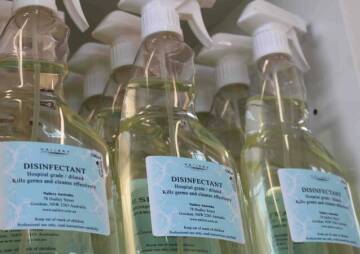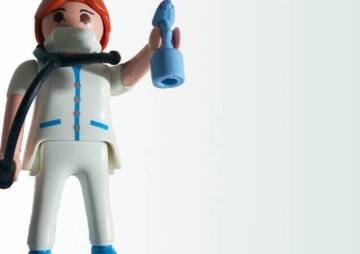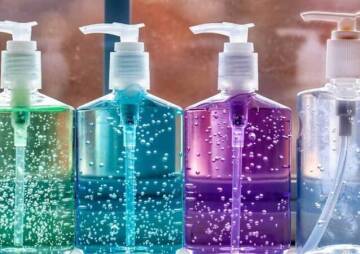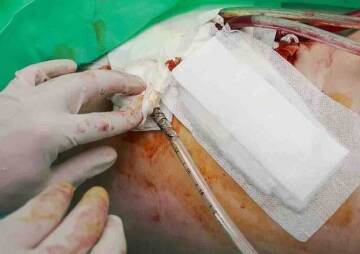-
Category
Craniomaxillofacial Surgery
Orthopedic Surgery
Spine Surgery
Orthopedic Implants
Hip Surgery
Knee Surgery
Pectus Excavatum
Bone Graft
Disinfectants
Healthcare
Which Operating Room Disinfectant Do You Use The Most?
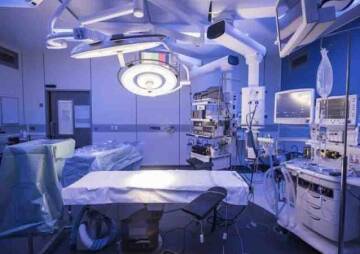
Proper disinfection of hospitals, especially operating rooms, is very important to ensure the health of patients. For this purpose, reliable and strong disinfectants should be used.
Hospitals and health care facilities are continuously polluted with pathogenic microorganisms. Some special hospital areas, such as the operating room, ICU, and CCU, must be disinfected differently. According to the findings of a study, approximately 10,000 people die per year in the United States due to surgical-site infections, a number that has decreased dramatically in recent years. To avoid this, operating rooms should be disinfected in a systematic and prepared manner, as well as with specialized disinfectants.
Choosing a disinfectant for the operating room and learning how to use it is also important since improper use of an operating room disinfectant may threaten the health of patients and care personnel. Which operating room disinfectant do you prefer to use? This article explains the different types of disinfectant products and how to use them.
Operating Room Disinfection Procedures
Before we get into the operating room disinfection products, it's a good idea first to discuss the principles and methods of cleaning the operating room. The process of washing and disinfecting the operating room is one of the basic and everyday concepts that should be given basic consideration. All operating room personnel is aware of the significance of this task.
Disinfection of the operating room is carried out under the supervision of specialist staff, including the perioperative leader, infection prevention specialist, ES leaders, infectious diseases, and facility staff. For this reason, it is teamwork that must be done meticulously to protect the health of patients. Personnel usually have to disinfect the operating room at least three times a day, depending on the type of surgery performed.
Principles To Consider When Disinfecting:
- Aerosols and sprays should not be used to clean the operating room because they are hazardous to personnel and patients' health.
- Disposable wipes and pour-top, squeeze-top, or flip-top bottles are appropriate methods of delivering the chemical to the surface.
- In the zone cleaning method, all available equipment or tools are divided between two or three technicians. Each of them is responsible for disinfecting each part.
- In the perimeter method, all contaminated equipment is brought to the middle of the room, then the rest of the room and contaminated equipment are disinfected and transferred to a clean part of the room.
- Cleaning of beds, tables, surfaces, and floors should also be done between surgeries.
- Thorough cleaning of the operating room, warehouse, walls, ceiling lights, and ceiling can be done weekly. Equipment should not be collected and removed until the end of the operation.
These factors were a set of general principles that all operating room disinfection staff and supervisors should be aware of. In the following parts, you will become familiar with different types of disinfectant solutions in the hospital.
Types Of Cleaning In The Operating Room

Choosing an operating room disinfectant is difficult and challenging because every disinfectant product and method is adjusted to kill a certain group of microorganisms. Today, both physical and chemical methods are used to disinfect the operating room. Experts divide the chemical products used into three categories: high-level disinfectants such as formaldehyde, glutaraldehyde; Intermediate level disinfection such as sodium hypochlorite; and Low-level disinfectants such as alcohol and quaternary ammonium compounds. It is important to note that in each group, in addition to the items listed, there are other disinfectants that have unique properties. Here are some operating room disinfection products to help you buy and use safely:
Deconex 53 Pulse
Deconex 53 Pulse is an Aldehyde-free instrument disinfectant designed specifically for sanitation and mild instrument pretreatment. This product is an Intermediate level disinfectant with the following advantages:
- Suitable for use in an ultrasonic bath;
- It is effective against enveloped viruses as well as Adenovirus and Polyoma SV40;
- Combined cleaning and disinfection effect;
- The broad activity spectrum, including the tuberculocidal effect;
- It is suitable for aluminum, stainless steel, copper, brass, polyamide, polyethylene, polypropylene, PET, POM, PVC. For ABS, acrylic glass and polysulfone.
Steranios 2 %
these are High-level disinfectant / Cold sterilant ready-to-use operating room cleaning solutions. Steranios 2% is suitable for disinfection of medical devices, surgical, medical, endoscopic, and heat-sensitive types of equipment. Its advantages are:
- No need for activators because they are ready to use;
- In 1 hour, it is active against bacteria spores;
- Active against bacteria, yeasts, molds, virus, and mycobacteria in 10 minutes;
- Possible control of the compatibility of disinfectant solutions with test strips;
- Stability of the bath during use: 30 days.
Nano Silver Disinfectant Spray
Nanosilver antibacterial spray is one of the most powerful disinfectants available, and it is a nanotechnology-based product. In this product, nanosilver can kill almost all types of viruses and bacteria in a few minutes in the form of colloidal particles. Its efficacy is approximately 99.9 percent, and it is nontoxic, making it safe for human health and patients. This product is widely used today to disinfect the operating room.
Visit our nano silver disinfectant products
Lantern UV Disinfection System
This is an easily portable UV-C generator and is used to provide a fast and highly effective method to disinfect surfaces and components in the operating room. Lantern UV Disinfection System produces over 130 MW/cm2 of average UV-C production to reduce the MRSA by 99% and spores like Clostridium Difficile in 3 minutes within 4ft. This is one of the safest products for disinfecting operating room surfaces, which is widely used in the medical industry and hospitals today.
50AF Deconex
50AF Deconex is an Aldehyde-free surface disinfectant special for disinfecting floors, walls, and medical devices in operating rooms. This product is also one of the most reliable solutions for disinfecting operating tables and examination tables. Among the features that make this product useful are the following:
- Having pleasant perfume;
- Excellent disinfection properties provide fast disinfection at low doses;
- Unlike QAV-based materials, non-greasy formulations do not make surfaces sticky;
- It is tested following DGHM guidelines;
- Soaps, anionic surfactants, and active chlorine reduce the effectiveness of deconex® 50 AF.
Vitex 5%
Vitex is one of the traditional and old disinfectant solutions used to disinfect surfaces and medical equipment in the operating room. A good feature of this product is that it is easy to use. But its effectiveness in killing bacteria and viruses is weak compared to other disinfectant products.
Aniosyme DD1
Aniosyme DD1 is a tri-enzymatic (protease, lipase, amylase) disinfectant solution for the disinfection of surgical instruments and medical devices in operating theaters. It is the top three enzyme detergent with antiseptic properties and is one of the most powerful disinfectants that kill a significant amount of viruses and bacteria in minutes. Notable features of Aniosyme DD1 include:
- Safety and ease of use
- Environmentally friendly
- Wide range of pre-disinfection applications
- Corrosion control
- Polyenzymatic detergent with high efficiency
Electrolyzed water
Electrolyzed water is a very widespread solution for disinfection in the operating room. This water is produced using electricity in saltwater and produces a solution of hypochlorous acid and sodium hydroxide. As a result, this water transforms into a powerful disinfectant solution capable of killing a wide spectrum of microorganisms, including bacteria, viruses, fungi, and parasites, in a short period of time.
At the End
Disinfection and cleaning of the operating room are among the activities that, if not performed correctly, will result in the death of many patients due to infection. Proper disinfection, as well as the use of strong and reliable disinfectant solutions and products, are the main factors in this process.
Traditional household disinfectants are inappropriate for cleaning hospitals, especially operating rooms because they are incapable of killing a significant amount of viruses and bacteria. For this reason, powerful disinfectants for operating room cleaning have been introduced to the global market and have been approved by various organizations. These products can only be used with complete knowledge of how to use disinfectant solutions and under the guidance of an expert team. Fortunately, with the development and distribution of potent disinfectants, the mortality rate from infection has dropped dramatically. This is a significant shift in the medical industry.
Which operating room disinfectant do you believe is the most powerful and effective?
